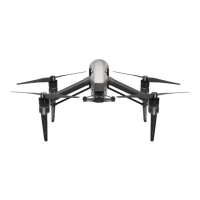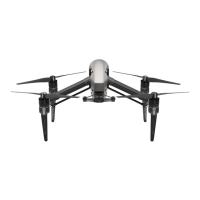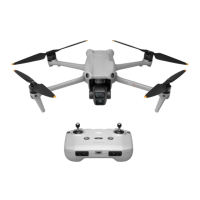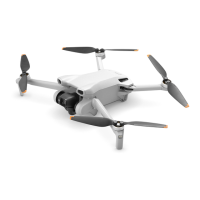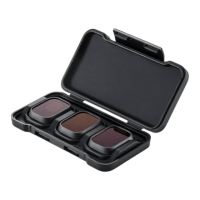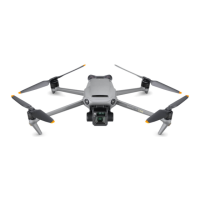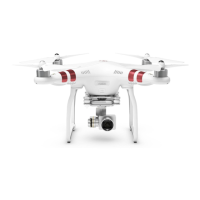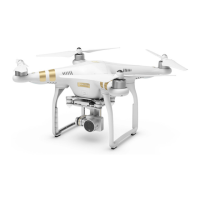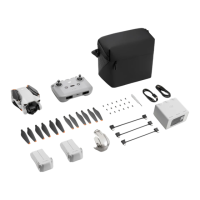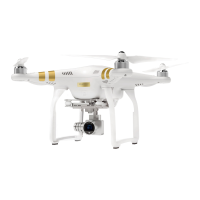Do you have a question about the dji INSPIRE 3 and is the answer not in the manual?
Explains manual icons, reading tips, and navigation methods.
Guides on tutorial videos and software downloads for initial use.
Overview of the cinematic-grade aerial shooting system and its core components.
Steps for activating batteries, preparing aircraft, and configuring the remote controller.
Detailed identification of aircraft parts, indicators, and systems.
Identifies and describes all parts and buttons of the remote controller.
Lists optional accessories like DL lenses and professional ecosystem products.
Details the flight control, communication, vision, and propulsion systems.
Describes Normal (N), Sport (S), and Function (F) modes, including A-mode.
Explains LED indicators and intelligent landing gear functions.
Covers Smart RTH, Low Battery RTH, Failsafe RTH, and landing protection.
Details forward, backward, lateral, upward, downward vision, and infrared sensing.
Covers antenna usage and RTK module introduction, setup, and modes.
Information on choosing and installing propellers for optimal flight performance.
Explains Timecode Input and USB-C Assistant ports.
Covers hub overview, warnings, paired charging, and charging modes.
Details battery level display, self-discharge, protections, and hibernation.
Guidance on using paired batteries, mounting, powering, warming, and storing.
Identifies key components of the gimbal camera and lens mount.
Details recording specs, image sensor resolution, and EI grayscale information.
Explains buttons and scroll wheel for camera operation: focus, record, exposure.
Describes gimbal tilt, pan, roll control and Follow/Free modes.
Explains live view, top bar, camera parameters, playback, and OSD display.
Guides on Quick Settings, Monitoring, Storage, and Other settings.
Steps for mounting batteries and dongles, and using straps.
Explains home screen, screen gestures, and basic navigation.
Details single and dual controller video transmission and quality settings.
Explains status LEDs, battery level LEDs, and controller alerts.
Covers charging methods, options, mechanism, and checking battery levels.
Procedure for linking controllers and explanation of control stick modes.
Details RTH, L/R buttons, customizable buttons, and aircraft control button.
Overview of app homepage elements: Profile, Data, GEO Map, Livestream, etc.
How to view, update, and manage GEO zones and unlock restrictions.
Guides on creating and executing automated flight routes using Waypoint Pro.
Explains how to use Spotlight Pro for tracking stationary and moving subjects.
Monitors aircraft, controller, and battery health, including error diagnosis.
Requirements for weather, location, and electromagnetic interference for safe flight.
Rules to avoid non-compliance, injury, and property damage; privacy considerations.
Details altitude, distance limits, GEO zones, and weak GNSS signal restrictions.
Steps and guidelines for calibrating the aircraft's compass for accuracy.
Essential checks before each flight for aircraft, controller, and environment.
Procedures for auto takeoff, auto RTH, and starting/stopping motors.
Procedures for takeoff, landing, and post-flight checks for safe operation.
Detailed specs for aircraft, gimbal camera, video transmission, and battery.
Instructions for updating aircraft, controller, and battery firmware via Pilot 2 or Assistant 2.
Guidelines for proper storage, transport, and regular maintenance of the aircraft.
Covers common problems, risk warnings, disposal, and certifications.
Details C3 Certification, MTOM, Remote ID, EASA, and GEO awareness.
Explains manual icons, reading tips, and navigation methods.
Guides on tutorial videos and software downloads for initial use.
Overview of the cinematic-grade aerial shooting system and its core components.
Steps for activating batteries, preparing aircraft, and configuring the remote controller.
Detailed identification of aircraft parts, indicators, and systems.
Identifies and describes all parts and buttons of the remote controller.
Lists optional accessories like DL lenses and professional ecosystem products.
Details the flight control, communication, vision, and propulsion systems.
Describes Normal (N), Sport (S), and Function (F) modes, including A-mode.
Explains LED indicators and intelligent landing gear functions.
Covers Smart RTH, Low Battery RTH, Failsafe RTH, and landing protection.
Details forward, backward, lateral, upward, downward vision, and infrared sensing.
Covers antenna usage and RTK module introduction, setup, and modes.
Information on choosing and installing propellers for optimal flight performance.
Explains Timecode Input and USB-C Assistant ports.
Covers hub overview, warnings, paired charging, and charging modes.
Details battery level display, self-discharge, protections, and hibernation.
Guidance on using paired batteries, mounting, powering, warming, and storing.
Identifies key components of the gimbal camera and lens mount.
Details recording specs, image sensor resolution, and EI grayscale information.
Explains buttons and scroll wheel for camera operation: focus, record, exposure.
Describes gimbal tilt, pan, roll control and Follow/Free modes.
Explains live view, top bar, camera parameters, playback, and OSD display.
Guides on Quick Settings, Monitoring, Storage, and Other settings.
Steps for mounting batteries and dongles, and using straps.
Explains home screen, screen gestures, and basic navigation.
Details single and dual controller video transmission and quality settings.
Explains status LEDs, battery level LEDs, and controller alerts.
Covers charging methods, options, mechanism, and checking battery levels.
Procedure for linking controllers and explanation of control stick modes.
Details RTH, L/R buttons, customizable buttons, and aircraft control button.
Overview of app homepage elements: Profile, Data, GEO Map, Livestream, etc.
How to view, update, and manage GEO zones and unlock restrictions.
Guides on creating and executing automated flight routes using Waypoint Pro.
Explains how to use Spotlight Pro for tracking stationary and moving subjects.
Monitors aircraft, controller, and battery health, including error diagnosis.
Requirements for weather, location, and electromagnetic interference for safe flight.
Rules to avoid non-compliance, injury, and property damage; privacy considerations.
Details altitude, distance limits, GEO zones, and weak GNSS signal restrictions.
Steps and guidelines for calibrating the aircraft's compass for accuracy.
Essential checks before each flight for aircraft, controller, and environment.
Procedures for auto takeoff, auto RTH, and starting/stopping motors.
Procedures for takeoff, landing, and post-flight checks for safe operation.
Detailed specs for aircraft, gimbal camera, video transmission, and battery.
Instructions for updating aircraft, controller, and battery firmware via Pilot 2 or Assistant 2.
Guidelines for proper storage, transport, and regular maintenance of the aircraft.
Covers common problems, risk warnings, disposal, and certifications.
Details C3 Certification, MTOM, Remote ID, EASA, and GEO awareness.
| Camera Sensor | Full-Frame CMOS |
|---|---|
| Obstacle Sensing | Omnidirectional |
| Max Ascent Speed | 8 m/s |
| Max Descent Speed | 8 m/s |
| Internal Storage | 1 TB SSD |
| Gimbal | 3-axis (tilt, roll, pan) |
| Camera | Zenmuse X9-8K Air |
| Effective Pixels | 24 MP |
| Gimbal Stabilization | ±0.01° |
| Transmission System | DJI O3 Pro |
| Live View Quality | 1080p/60fps |
| Remote Controller | DJI RC Plus |
| Remote Controller Charging Port | USB-C |
| Flight Time | 28 minutes |
| Transmission Range | 15 km |
| Max Speed | 94 km/h |
| Operating Temperature | -20°C to 40°C |
| GNSS | GPS + Galileo + BeiDou |
| Operating Frequency | 2.4000-2.4835 GHz; 5.725-5.850 GHz |
| Transmitter Power (EIRP) | 2.4 GHz: <33 dBm; 5.8 GHz: <33 dBm |
| Hovering Accuracy Range | Vertical: ±0.1 m; Horizontal: ±0.3 m |
| ISO Range | Video: 100-25600 |
| Shutter Speed | 1/8000s to 2s |
| Supported File Formats | JPEG, DNG, MP4, MOV |
| Latency | 90 ms |
| Remote Controller Operating Frequency | 2.4000-2.4835 GHz; 5.725-5.850 GHz |
| Supported SD Cards | microSD |
| Video Resolution | 8K |
